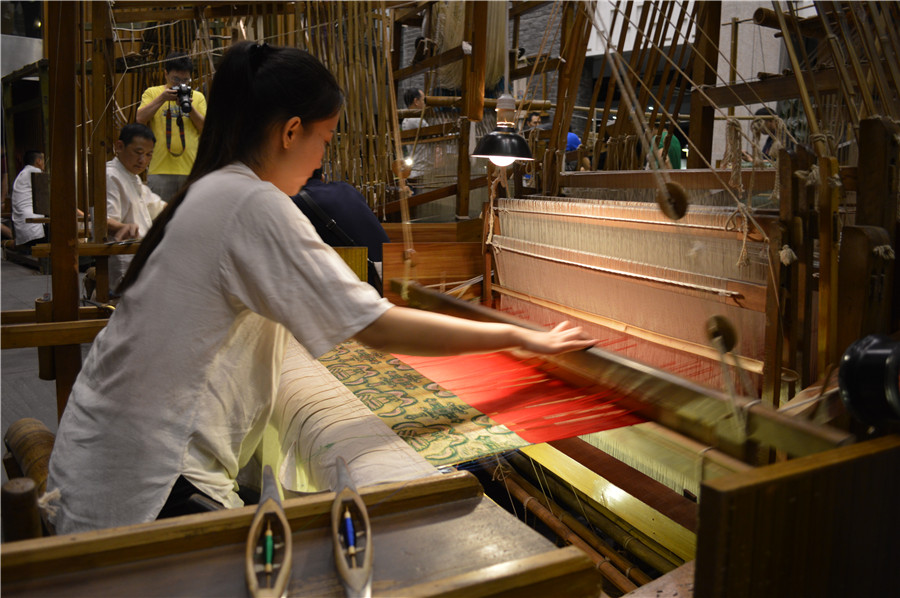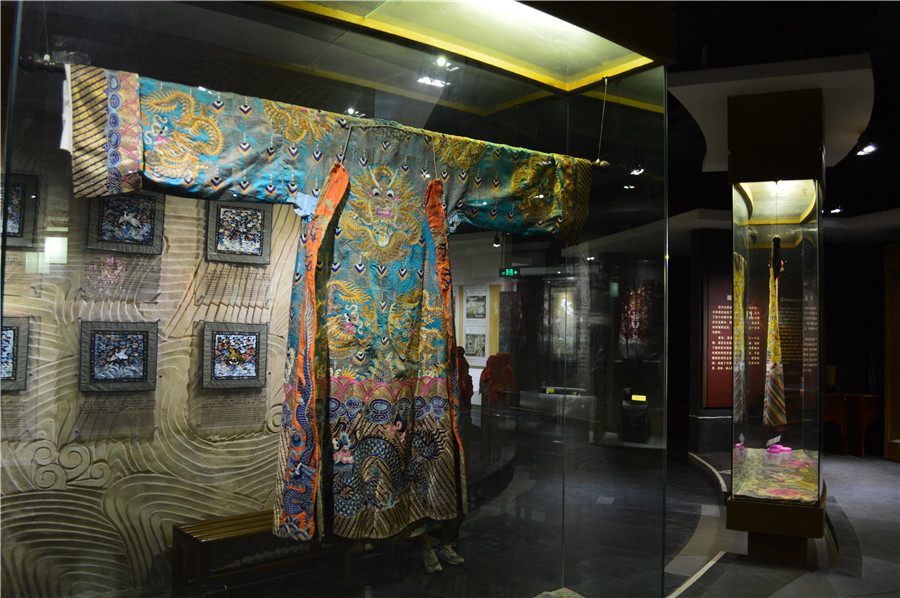Welcome to gochengdu.cn!
You need to accept our privacy and cookie policy to continue to browse our website. You can change your cookie settings through your browser.

Since ancient times, Sichuan has been well known for brocade and embroidery.
The technique of Shu embroidery began to take shape in the Han Dynasty (206 BC-AD 220) and was one of the top four Chinese embroidery schools, along with Su Embroidery in Jiangsu, Xiang Embroidery in Hunan and Yue Embroidery in Guangdong. The most well-known among the four, Shu Embroidery has 120 kinds of stitches, and features fluid lines and bright colors, which look natural and vivid.
A thriving art in the Han Dynasty, Shu Brocade reached its apex in the Tang Dynasty (AD 618-907) and was the specialty of ancient Chengdu. The technique of Shu Brocade weaving was listed as China's national-level intangible cultural heritage in 2006. It takes two people working at the same time on a traditional Shu Brocade patterning tower loom to produce the brocade.

The person working on the top of the patterning tower loom is in charge of creating the pattern by pulling the threads.

The person working at the bottom of the patterning tower loom is in charge of weaving and switching different colors of threads. The handmade process is so complicated that two people can only produce 6-8 centimeters of Shu brocade a day.

A robe made of Shu brocade in the Chengdu Shu Brocade and Embroidery Museum.
The Chengdu Shu Brocade and Embroidery Museum opened in 2009 and is composed of three parts: the exhibition of Shu brocade and embroidery, artworks for sale, and a workshop where visitors can get up close with craftsmen.
Source: China Daily
Image source: Jiang Wanjuan
Edited by Feng Ling